Alerts: Nov. 12, 2024: Pertussis (whooping cough) outbreak confirmed in Spokane County. SRHD urges parents and pregnant people to vaccinate. Read the press release. | Feb. 21: Some federal websites are experiencing disruptions while being reviewed for compliance with President Trump’s executive orders. As a result, some links and information on srhd.org may be unavailable.
Programs and Services | Food Security and Health Promoting Food Systems
Success stories communicate the changes that are happening in Spokane County to make healthy living easier where people live, learn, work, and play.
Diabetes affects members of the Spokane Tribe of Indians more than any other disease. The tribe is not alone in being disproportionately impacted; diabetes isn’t an equal opportunity disease. Study after study shows that it hits some groups harder than others. The diabetes rate in Spokane is 8.7 percent (2015) while the diabetes rate in Wellpinit, where the tribe is headquartered, is around 10 percent to 11 percent. This means more than 200 people in the community are living with diabetes.

Click to read the Success Story
In partnership with Spokane Regional Health District, Spokane Tribe has taken important steps to address diabetes and reduce consumption of alcohol and tobacco within its community. As a part of this effort, the manager of the only full-service grocery store within 30 miles of the reservation, the Wellpinit Trading Post, partnered with SRHD to offer healthier food and beverage choices.
In 2013, Washington State Governor Jay Inslee introduced executive order 13-06, Improving the Health and Productivity of State Employees and Access to Healthy Foods in State Facilities, which directs state agencies to work to improve the health and productivity of state employees. The order also directs other state agency services, including those pertaining to students, custodial populations and residents, to adopt and implement food and beverage service policies that ensure the provision of healthful food and beverages in all food venues available.
In response to this order, Spokane Regional Health District assists state agencies within Spokane County to work toward adherence to Washington State’s Healthy Nutrition Guidelines.

Click to read the Success Story
SRHD partnered with the food service director and the registered dietician at Lakeland Village, a state-operated, 24-hour care facility, to improve meal options for residents. This was accomplished by incorporating cooking from scratch on a more regular basis, tweaking recipes to reduce fat and sodium, and substituting seasonal fresh fruit and vegetables for canned options.
High intake of dietary sodium is associated with elevated blood pressure, which increases the risk of heart disease and stroke.
Most sodium consumed by Americans comes from processed and restaurant foods. Because these sources make up a large part of the American diet and because consumers have little control over the level of sodium in these foods, it is often difficult for consumers to reduce their sodium intake.
Reducing sodium intake to levels consistent with the 2010 Dietary Guidelines for Americans is a priority for Spokane Regional Health District. The agency is working to reduce sodium intake by:
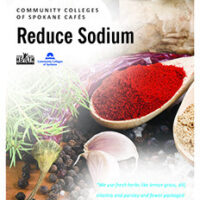
Community Colleges of Spokane shares its successes in providing healthy options and reducing sodium in the foods they serve. Both of its cafes began offering daily colorful, creative salad bars and healthy Mindful recipes at least once a week. Staff also started purchasing lower sodium soup bases and promoting fresh produce at their registers.

Deaconess Hospital shares its leaps and bounds in lowering sodium by replacing its soup bases with lower sodium ones. This product change resulted in a 33% reduction in sodium and no loss in
cafeteria food sales. Staff also began roasting meats using carrots, onions and herbs to flavor verses salt.

Eastern State Hospital staff share how they replaced their most frequently used high sodium products, such as soup bases and tomato products, with their lower sodium counterparts, and modified recipes to go with the changes. In addition to the recipe changes, staff used attractive food presentation of fresh fruit and vegetables and healthy snacks which resulted in increased sales of these items.
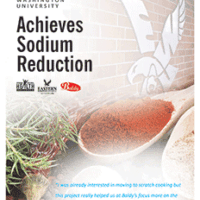
Learn how Eastern Washington University cooks learned to prepare soup stock from scratch, including using fresh vegetable trimmings. Cooks were also conditioned to not salt french fries when shakers were removed from the kitchen.
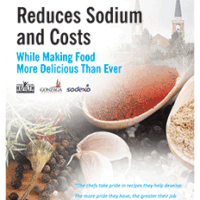
Hear how Gonzaga University staff developed a 100% scratch, low-sodium, gluten-free vegetarian soup base. The soup base is made as part of the recipe, which allows them to use it at its peak of freshness and avoid the time and hassle to cool and store it. Fruit-infused waters are now offered at meals, and scratch cooking menu options were expanded.

Hear how Northern Quest Casino staff found success after analyzing their Southwestern dishes and discovering they were high in sodium due to commercial seasonings. They also incorporated no-added-salt diced tomatoes in several recipes and began offering lower sodium ketchup. Staff also started providing fruit-infused waters and removed salt shakers from tables.

Click here to read Success Story
Hear how Pete's Pizza was able to find the hidden sources of sodium in pizza and how they developed a new pizza sauce, much to the delight of patrons.
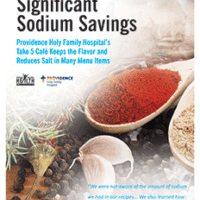
Hear how Providence Holy Family Hospital replaced higher sodium tomato products, turkey and canned beans with lower sodium options, which resulted in an average reduction of sodium of more than 50%. They also incorporated infused waters and promotional materials, as well as marketed healthy snack items at the registers.
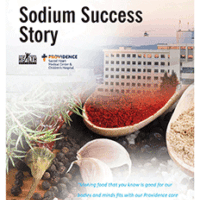
Providence Sacred Heart Medical Center created an interdisciplinary focus group to identify nutrition guidelines for meals while expanding and promoting healthy choices. They added wellness bowls, a fresh fruit and yogurt bar, additional vegetarian items and infused water stations. In addition, sodium reduction was achieved by using lower sodium soup bases and ketchup.
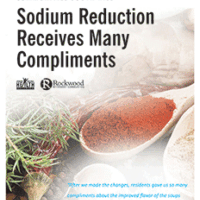
Click here to read Success Story
Hear how Rockwood Retirement Communities South Hill positively affected the diets of employees served in the employee café by redesigning the employee dining area to include a soup and salad bar, sandwich station and sugar-free beverage area. Additionally, all the soups are now made with lower sodium soup bases, which reduced sodium an average of 41 percent. Staff went one step further and replaced all canned, diced tomatoes with no added salt canned tomatoes in vegetable soups and pasta dishes.